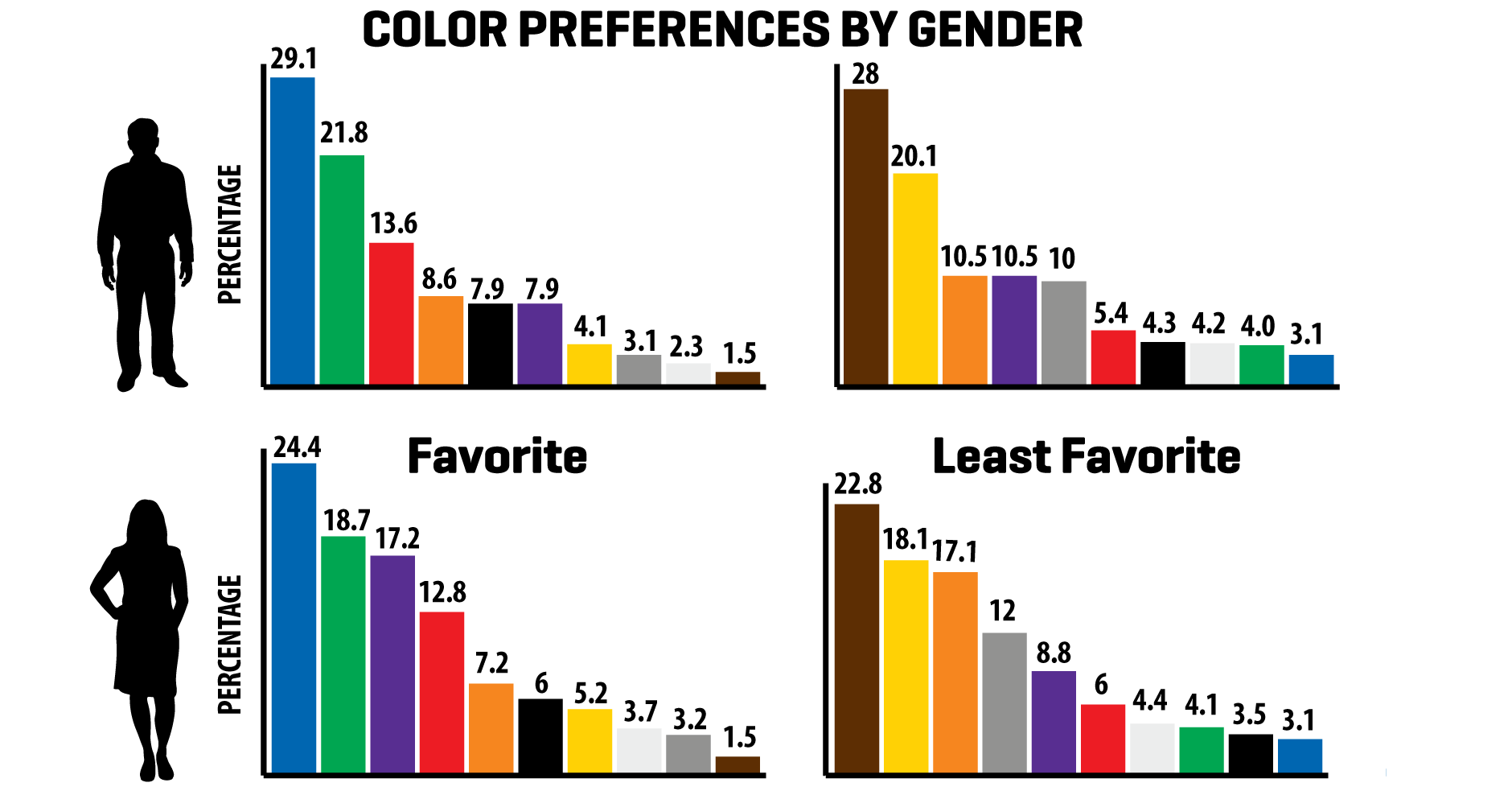Selecting colors for design projects
Selecting a palette that’s right for your design means thinking about personal preferences, color harmony, color blindness, cultural differences, color trends, and your particular situation. Here’s a quick rundown and online resources to help you pick the right colors for your next design project.
Personal preferences
A poll of color preferences according to gender and age yields more information useful when choosing colors for your design. In the first 1,100+ results of this ongoing survey, both men and women selected blue and green as their favorite colors, but while purple was the third-most favorite color among women, purple was the third-least favorite color among men. Differences also come up depending on age, so the color palette you choose for a site geared to children might be quite different than one designed for older adults. What’s your favorite color? Take the one-minute poll and after you vote, you can compare your favorites with the latest worldwide results of this color preferences survey. Read the detailed results of the color survey, broken down by age and gender.

Color Harmony
Selecting a palette of colors that work together is part art and part science. After you select a principal color for your design, you can actually use color theory to select the color combinations that work together, using analogous colors, complementary colors, or a color triad. More about color harmony»

Color Deficit
Color blindness occurs when there is a problem with certain nerve cells of the retina. In the most common type of color blindness, a person has trouble telling the difference between red and green, but some people have trouble seeing blue-yellow colors, and in the most severe form of color blindness, a person cannot see any color. About 8% of Caucasian men, 6% of Asian men, and 4% of men of African descent have some form of color deficit (very few women do). But, as anyone ages, changes in our eyes can cause blue colors to appear darker, making it difficult to distinguish between red and purple or green and blue. To make sure your design is user-friendly to everyone, don’t rely on color to convey information. Use shape, size, labels, textures, and line shadings instead. More about color blindness»

Cultural Differences
Certain colors have different meanings depending on the culture you grew up in, and colors can send the wrong meaning if misused in your design. For example, if you were creating a wedding website for U.S. audiences, you might use a lot of white, which in western cultures is used for brides, angels, peace, etc. In some eastern cultures, white is the color of mourning and funerals, whereas red is the color for good luck and celebration, and is worn by brides. More about color in different cultures»

Color trends
Colors go in and out of style over time, including colors used in design. Often these color trends come from the fashion and decorating worlds, and a great way to see what the future color trends will be is to check out the seasonal Pantone fashion color reports. These reports show the colors that textile designers will be using in their upcoming collections and incorporating them in your design can put you ahead of the pack. Remember that in fashion, one week you’re in and the next you’re out, so design so it’s easy to update colors when the next season’s looks hit the runway. Pantone color forecast»
You
Of course, all these rules are trumped by the specific needs of your design. If your products are ecologically friendly, you might want to use a lot of green in your design. Selling coffee? Then brown might make sense. Trying to attract a Fortune 100 audience might call for a lot of blue. Testing different colors, asking your customers, and refining your color palette is the only way to know what colors work best for you.
What’s YOUR favorite color?
Take a one-minute survey and let us know what your favorite and least favorite colors are, plus take a look at what others around the world have said so far. Click here to take survey»

